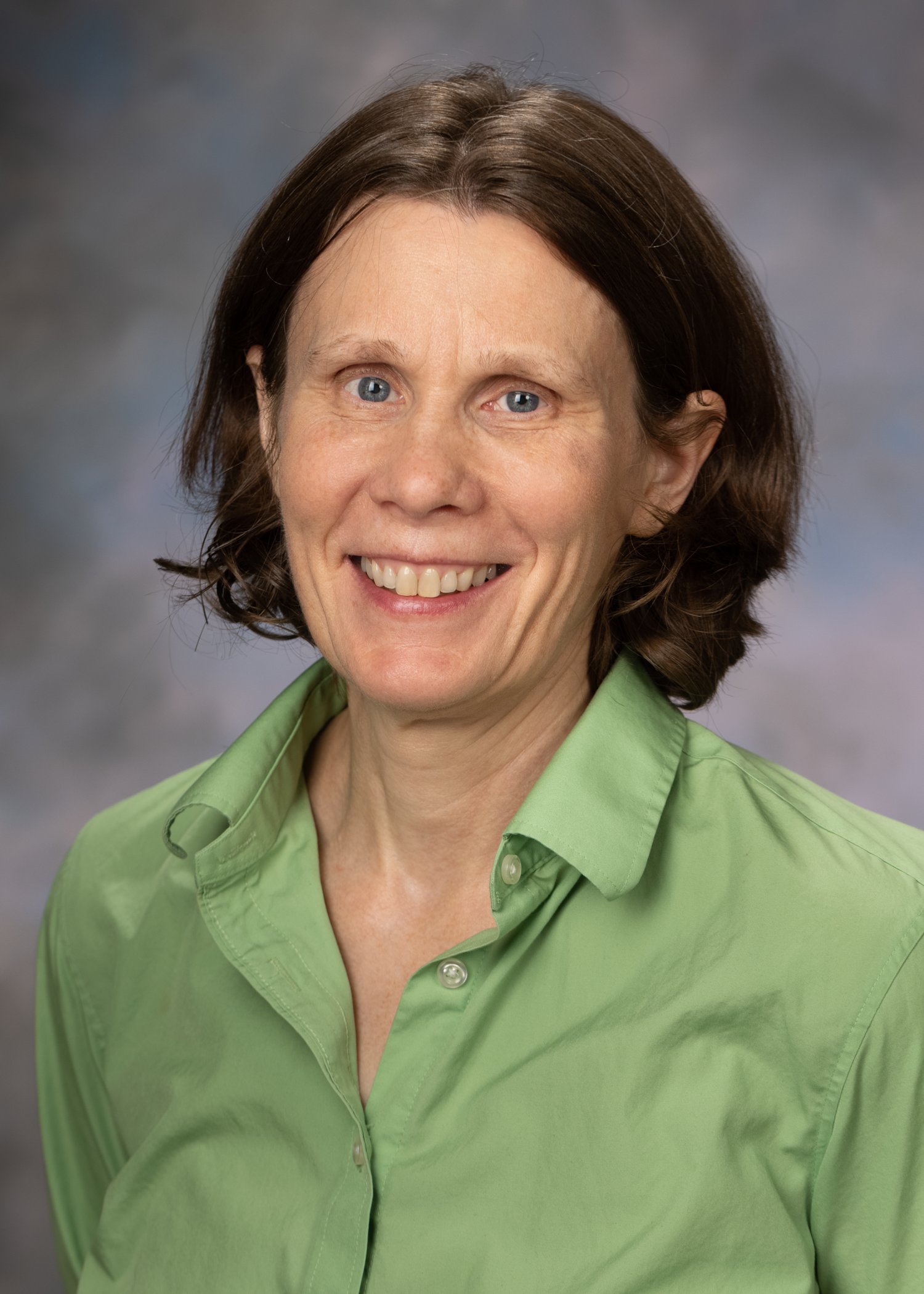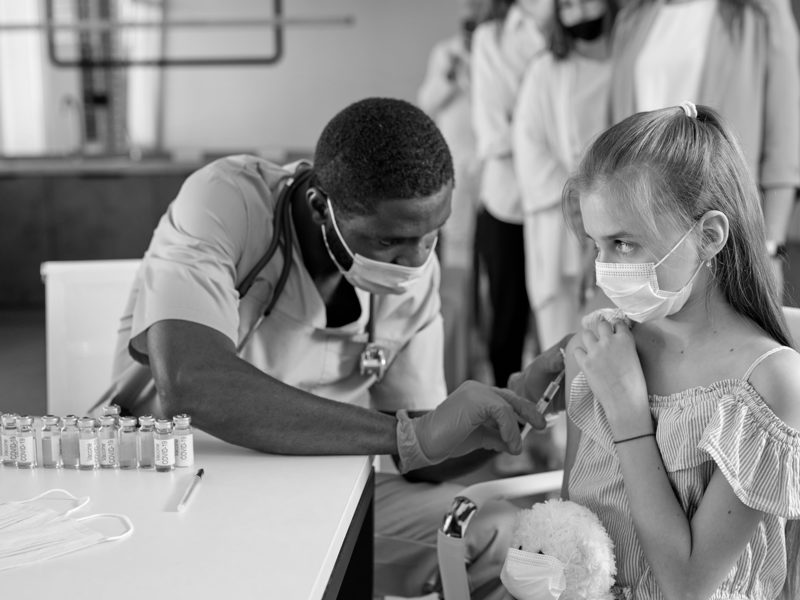Featured Researcher — Brenda Lilly, PhD
Featured Researcher — Brenda Lilly, PhD https://pediatricsnationwide.org/wp-content/themes/corpus/images/empty/thumbnail.jpg 150 150 Katie Brind'Amour, PhD, MS, CHES Katie Brind'Amour, PhD, MS, CHES https://pediatricsnationwide.org/wp-content/uploads/2021/03/Katie-B-portrait.gif- October 12, 2022
- Katie Brind'Amour, PhD, MS, CHES
Brenda Lilly, PhD, a principal investigator in the Center for Cardiovascular Research at Nationwide Children’s Hospital, examines the interactions between endothelial cells, which line the inside of blood vessels, and smooth muscle cells.
Blood vessels play a critical role in a wide variety of diseases. As a basic biologist, Dr. Lilly studies the mechanisms involved in their formation and function. By understanding what goes wrong in blood vessel formation and function in particular diseases, she and her lab aim to better understand the key elements in the development and maintenance of healthy vascular tissue.
Dr. Lilly and her team recently discovered that when NOTCH signaling is stopped in endothelial cells, there is a dramatic effect on the smooth muscle cell layer of blood vessels. The findings, published in Vascular Pharmacology, play an important role in two major projects currently underway in her lab:

- Studying the NOTCH signaling pathway and its significance in diseases such as diabetes.
- Studying the role of a mutation in the Jagged1 gene (part of the NOTCH pathway) in Alagille syndrome.
Studying endothelial cell dysfunction and the interplay between cell types could lead to a better mechanistic understanding of vascular problems, such as stenosis, in diseases that impact NOTCH pathways. Ideally, once the mechanisms and underlying biology are revealed, clinicians can treat the true cause of disease processes, rather than just the symptoms.
Read on to learn more about Dr. Lilly and her work.
What was your path to your current role?
I got my doctorate at the University of Texas in Houston, then completed postdoctoral research at the University of Utah. After that, I had my first faculty position at the Medical College of Georgia in Augusta and was there for eight years before being recruited to Nationwide Children’s.
I trained as a developmental biologist in a muscle lab and studied muscle cell differentiation. When I came across vascular smooth muscle cells, I thought they were particularly interesting because, unlike other muscle cells types, they can revert to an undifferentiated state especially in disease, so I chose it as my focus.
Getting into NOTCH work was serendipitous. My lab did a screen for genes that were regulated by endothelial and smooth muscle cell cross-talk, and one gene that came up was NOTCH 3, a part of the general NOTCH pathway. Overnight, we became a NOTCH lab. It’s the pathway that keeps on giving, revealing more and more we didn’t know. It’s very complex and important to vascular biology, so it was a no-brainer to pursue it.
Why did you decide to pursue your work at Nationwide Children’s?
Nationwide Children’s has a really rich scientific environment. I like the collegiality and that the leadership is supportive of research and basic science.
And no matter where you go in Ohio, if you tell somebody you work at Nationwide Children’s, they have a story about someone they knew who was treated here — and it’s a good story. Nationwide Children’s works hard to have a really good clinical reputation and to do a lot of good for the community as well.
What is your favorite part of your job?
I love being able to test hypotheses and discover novel information.
How does your research serve our patients and our community?
As a basic biologist, I make discoveries that can be translated into new or better patient treatments.
Fun Facts About Dr. Lilly
What fictional character would you most like to meet?
I’d like to meet Dr. Frankenstein from the movie, Young Frankenstein, because he reads The Lancet on the train, and he is just funny.
What do you usually eat for breakfast?
I have a protein shake.
What’s your dream job (besides research)?
I’d work with horses. I have had horses, and I love to ride horses to relax.
What’s your favorite food?
Pizza.
Favorite band?
AC/DC.
Favorite thing you’ve done this year?
I took a trip to France. We started in Paris and then went east to Laussane, Switizerland, where I got to see one stage of the Tour de France.
For example, my lab discovered that NOTCH signaling seems to play a role in diabetes. People with type 2 diabetes have reduced blood flow in their coronary arteries, which is important to their heart health. We have shown that the NOTCH signaling pathway is suppressed in the coronary blood vessels of people with diabetes, and we hypothesize that one reason they don’t function properly is that insulin resistance suppresses NOTCH signaling.
We have submitted a collaborative grant with Aaron Trask, PhD, another principal investigator in the Center for Cardiovascular Research at Nationwide Children’s, to test this hypothesis and uncover the mechanisms behind coronary dysfunction in diabetes. Ideally, if we understand how NOTCH signaling contributes to this decreased blood flow, we can target the pathway therapeutically.
I am also working on NOTCH signaling in Alagille syndrome, an inherited condition that affects numerous body systems and can lead to early death due to organ failure. Most clinicians would immediately think about the liver problems associated with this diagnosis, but another big problem is a vascular phenotype called peripheral pulmonary stenosis, which can lead to significant heart problems. Almost all children with Alagille syndrome have a mutation in the Jagged1 gene, which is part of the NOTCH pathway. We hope to figure out why Jagged1 mutations cause peripheral pulmonary stenosis through collaboration with Vidu Garg, MD, director of the Center for Cardiovascular Research, and Mingtao Zhao, DVM, PhD, who is also a principal investigator in the center. We intend to use patient-derived pluripotent stem cells in the lab to understand what happens with Jagged1 mutations in real patient endothelial and smooth muscle cells as they communicate, proliferate, differentiate and form blood vessels. Until we understand the biology of this disease, we can’t fix it, because we don’t truly know what to target. Once we know what is causing the stenosis, we have a better opportunity to provide effective treatments for these children.
What’s next?
I love science and my research, and I am always looking for the next big discovery that could change our understanding of a disease or the way we treat patients. I hope to have two grants that will support my work moving forward, and I would like to generate research that results in high-impact publications to advance the field of NOTCH signaling in blood vessels, so we can open up new targets for the medical treatment of challenging diseases.
About the author
Katherine (Katie) Brind’Amour is a freelance medical and health science writer based in Pennsylvania. She has written about nearly every therapeutic area for patients, doctors and the general public. Dr. Brind’Amour specializes in health literacy and patient education. She completed her BS and MS degrees in Biology at Arizona State University and her PhD in Health Services Management and Policy at The Ohio State University. She is a Certified Health Education Specialist and is interested in health promotion via health programs and the communication of medical information.
-
Katie Brind'Amour, PhD, MS, CHEShttps://pediatricsnationwide.org/author/katie-brindamour-phd-ms-ches/April 27, 2014
-
Katie Brind'Amour, PhD, MS, CHEShttps://pediatricsnationwide.org/author/katie-brindamour-phd-ms-ches/April 27, 2014
-
Katie Brind'Amour, PhD, MS, CHEShttps://pediatricsnationwide.org/author/katie-brindamour-phd-ms-ches/April 27, 2014
-
Katie Brind'Amour, PhD, MS, CHEShttps://pediatricsnationwide.org/author/katie-brindamour-phd-ms-ches/April 28, 2014
- Post Tags:
- Center for Cardiovascular Research
- Posted In:
- Featured Researchers
- Research







